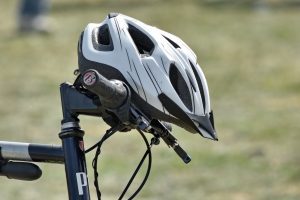As we embark on our thrilling open-air adventures, let’s remember that protection should always be our top priority, particularly when it comes to riding scooters.

In this guide, we’ll provide you with all the necessary information to ensure you have not only fun but also a safe ride in the open with FamilyHype. From understanding your scooter’s mechanics to the significance of protective gear, we’ve got you covered.
We’ll walk you through pre-ride security checks, share safe riding techniques and help you be more aware of your surroundings. Additionally, we’ll talk about managing speed, riding in different weather conditions, and what to do in emergencies.
We care about your protection as much as we do about your enjoyment, so let’s embark on this journey together, ensuring every ride is a safe, yet thrilling adventure.
We encourage you to share your best electric scooter riding experiences and safety tips with us and your peers through FamilyHype, so we can all make sure we are riding safely and smartly and promoting scooter safety. After all, isn’t it our responsibility to look after one another?
Let’s ride safely, and let’s ride smart.
Key Takeaways
- Protection should always be the top priority when riding scooters for both your health and the safety of other people.
- Wearing a helmet and proper protective gear is crucial for security.
- Performing pre-ride security checks and maintaining the scooter is important.
- Being aware of surroundings, following traffic rules, and respecting pedestrians and drivers are essential for safe scooter driving.
Understanding Your Scooter
Before hitting the open road with your electric scooter, you must get to know your scooter’s ins and outs; it’ll not only enhance your ride but also boost your electric scooter safety and help you stay safe. We believe in ensuring your comfort and security. Therefore, understanding the different scooter types, like kick scooters, is fundamental.
Whether it’s a foldable, electric, or gas scooter, each type has specific features and maintenance requirements. Scooter maintenance, for instance, might involve regular tire pressure checks, brake inspections, or battery upkeep for electric models. By familiarizing yourself with these aspects, you’re not just ensuring a smooth ride but also expressing care for the protection of others.
So, let’s turn our attention to something just as vital: the helmet. Remember, it’s not just about the ride, but also the rider.
Importance Of Wearing A Helmet For Outdoor Rides
As we embark on our scooter adventures, let’s not forget the crucial role that a helmet plays in our protection. Choosing the right helmet is as important as learning how to ride our scooters correctly. The Consumer Product Safety Commission recommends always wearing a helmet to protect against head trauma.

And once we’ve got that perfect helmet, we must ensure we’re wearing it the right way, because it’s not just about having one, it’s about using it properly to protect our heads from injuries like head trauma.
Choosing The Right Helmet
You’re going to need a top-notch helmet to ensure your scooter adventures, like riding bicycles or performing stunt riding, are both fun and safe. Choosing the right helmet isn’t just about picking the most stylish one. It’s about personalizing it for your comfort and protection.
Helmet customization, for instance, allows you to adjust the fit and add-on features, like visors or ear pads. It’s also vital to remember that a well-maintained helmet is a safe helmet. Regular helmet maintenance, such as checking for cracks and cleaning the padding, can extend its lifespan and performance.
Always prioritize your safety by investing in a high-quality helmet that fits you well and is properly maintained for both mental health and physical well-being. Remember, wet weather can make riding more challenging, so proper helmet use is crucial.
Now, let’s explore the proper way to position your helmet for maximum protection and comfort while riding your bike or scooter.
Correct Way To Wear A Helmet
Slipping on your helmet might seem like a no-brainer, but it’s crucial to ensure it’s positioned correctly for optimal protection and comfort. We can’t stress enough how essential correct helmet placement is, not only for your protection but also for those around you.
Here’s a simple guide for you:
- Helmet Maintenance
- Regularly inspect your helmet for any signs of wear and tear.
- Consider replacing your helmet every 3-5 years, even if it appears intact — the protective materials degrade over time.
- Strap Adjustment
- The strap should fit snugly but comfortably, not overly tight.
- Ensure the buckle is secure and doesn’t easily come undone.
Remember, a helmet worn incorrectly is as good as not wearing one at all. Now, let’s move on to discussing the importance of other protective gear.
Protective Gear For Outdoor Rides
Don’t underestimate the importance of wearing the right protective gear, such as helmets, riding gloves, and knee and elbow pads, when riding your scooter or other vehicles. Beyond a helmet, sturdy gloves, knee and elbow pads, and high-visibility clothing can significantly reduce the risk of injuries, like broken wrists. We can’t stress enough how crucial gear maintenance is, especially in wet weather. Regular checks for wear and tear are essential to ensure your protection gear remains effective.

Visibility enhancements such as reflective strips on your clothes or scooter help make you more noticeable to others, particularly in low light conditions or when riding alongside many children or other riders. Considering these tips, we’re not just promoting your protection, but also serving the security standards set by the Consumer Product Safety Commission.
Moving forward, we’ll delve into how to ensure your scooter is in top condition before embarking on your open-air adventure.
Pre-Drive Security Checks
Before hitting the road in wet weather, it’s crucial to perform pre-ride checks to ensure your ride is in optimal condition. One vital aspect to check is tire pressure, which significantly influences your scooter’s stability, maneuverability, and braking. Low or uneven pressure can lead to accidents, so we recommend investing in a quality pressure gauge and adjusting accordingly.
Regular scooter maintenance, including checking the brakes, lights, and controls, is equally important. Ensure your brakes are responsive, your lights are functional, and your controls are smooth. This not only guarantees a safe ride but also prolongs your scooter’s lifespan.
Now that we’ve covered how important pre-ride checks are, let’s move on to exploring safe riding techniques for your open-air adventures, such as riding bicycles or performing stunt riding.
Techniques For Protection
We’re thrilled to dive into the next chapter of our scooter protection guide: Safe Riding Techniques.
Let’s start mastering the art of turning and understanding safe braking techniques together.
These skills are fundamental to ensuring not only your protection but also enhancing the joy of your scooter expedition.
Mastering The Art Of Turning
Mastering the art of turning on your scooter can truly transform your open-air adventures, making them safer and even more exhilarating! To start, balance training is vital. We recommend practicing on flat, open spaces before tackling real road conditions. The key is to lean into the turn, not away from it, while keeping your scooter in control.
Next, let’s not forget about turn signal usage. It’s not just for cars; it’s a crucial part of our scooter protection toolkit too. By using your turn signals while riding with other vehicles, you’re effectively communicating with other road users about your intentions. This simple action can prevent misunderstandings and accidents.
Now that you’ve got the basics of turning down, let’s shift gears and discuss another essential element of scooter protection: safe braking techniques.
Braking Techniques
Knowing how to stop your ride correctly and promptly can be a real game-changer, turning potentially dangerous situations into controlled maneuvers. So, let’s learn some safe braking techniques.
- Maintain a good grip on the handlebars and apply brakes smoothly. Never brake abruptly unless it’s an emergency.
- Brake maintenance is important. Regularly check if your brake pads are worn out. If so, it’s time for a brake replacement.
- Practice stopping swiftly and safely. Start slow, then gradually increase your speed as you get more comfortable.
Remember, protection is always our number one priority. By mastering these techniques, we’re not only ensuring our security but also the safety of those around us.
Next, we’ll delve into how to navigate the rules of the road.
Obeying Traffic Rules
It’s crucial to respect and abide by all traffic rules when scootering to ensure the well-being of both yourself and other people’s safety, not just for your protection, but to also ensure the well-being of others around you. Signaling intentions clearly and promptly can prevent accidents and keep all road users safe.

Let’s remember that road etiquette is a shared responsibility, and as scooter riders, we must do our part.
Let’s be thoughtful of others by staying in our lane, following speed limits, and always stopping at red lights and stop signs. Our actions can make a significant difference in maintaining a safe environment for everyone, especially children who are more vulnerable to head trauma.
As we continue on our joyful scooter expedition, let’s remember that, just as important as obeying traffic rules is, being fully aware of our surroundings is equally vital.
Awareness Of Surroundings
As we continue exploring scooter security, let’s turn our attention to the importance of being aware of our surroundings.
It’s crucial to keep a keen eye out for pedestrians, ensuring we don’t jeopardize their protection or ours, especially when riding in wet weather conditions. Wet surfaces can increase the risk of accidents.
Similarly, we can’t ignore the presence of cars or other riders, as we share the road, and must be mindful to avoid any potential accidents that can cause head trauma or other injuries.
Keeping A Close Eye On Pedestrians
Don’t forget, those on foot are just as important as you are on the road, so let’s respect their space and keep everyone safe.
As scooter riders, we need to adopt responsible pedestrian etiquette to ensure we coexist peacefully with pedestrians.
- Develop a keen eye for sidewalk navigation:
- Anticipate pedestrian movements and maintain a safe distance
- Always yield to pedestrians at crossings
- Demonstrate respect and understanding:
- Slow down while passing pedestrians
- Alert them of your presence if necessary
Remember, we’re all sharing the same space, and protection is our collective responsibility. By showing courtesy and observing these simple rules, we can make our tour enjoyable and safe for everyone.
Now, let’s turn our attention to keeping a keen eye out for our four-wheeled friends on the road.
Keeping An Eye Out In Vehicles
Navigating your way around cars requires a sharp focus and a keen understanding of road rules. We can’t stress enough the importance of car avoidance when riding your scooter. Always be aware of your surroundings and anticipate the movements of cars around you. Never assume a driver has seen you; it’s safer to assume they haven’t.
At night, visibility becomes even more critical. Ensure you’re easily seen by wearing reflective clothing or attaching lights to your scooter. Nighttime visibility isn’t just a bonus; it’s a necessity.
Remember, we’re not just protecting ourselves, but also ensuring the protection of those around us. Following these guidelines promotes harmony on the road.
Next, let’s delve into how to control your speed for an even safer ride.
Managing Speed
Feeling the wind whip through your hair as you rocket down a hill on your scooter seems like the ultimate thrill, but it’s crucial to remember that controlling your speed is the key to avoiding nasty spills and potential injuries.
Even though it’s tempting to let loose and go full throttle, we must stress the importance of speed control. It’s not just about preserving our protection, but also about being responsible riders who respect others sharing the same space.
Respecting speed limits, especially in populated areas, is a must. It’s not about stifling our fun, but about ensuring we don’t risk ourselves or others. Let’s be mindful of our speed and make our open-air scooter adventures safer and more enjoyable for everyone.
As we manage our speed, it’s equally important to consider the impact of weather conditions on our tour.
Driving In Different Weather Conditions
You’ll find that the elements can certainly add a twist to your journey, whether it’s a sunny day or a downpour. Adapting to different weather conditions is a crucial part of scooter protection. We’ve got three key considerations for you:
- Weather adaptations: Customize your gear for the climate. On sunny days, wear sunglasses and sunscreen. If it’s rainy, consider water-resistant clothing, and always take extra care on slippery surfaces.
- Rainy: Puddles can hide potholes or other hazards, so try to avoid them when possible. Also, braking distances may increase in wet conditions, so be sure to adjust your speed accordingly.
- Cold weather: Wear warm clothing and use thermal gloves to maintain a good grip on your scooter.
Remember, the best way to enjoy your ride is to be prepared for whatever Mother Nature throws your way.
Up next, we’ll discuss some emergency measures for handling unexpected situations.
Emergency Measures
As we explore the exhilarating world of scooter expeditions, we must be well-equipped with knowledge of what to do in case of an accident. This doesn’t only mean understanding how to navigate the situation but also being proficient in essential first aid.
We believe in the importance of ensuring your protection and well-being, so let’s dive into these topics and arm ourselves with the necessary information.
What To Do In Case Of An Accident
Despite all your best protection efforts, accidents can still happen, so it’s crucial you know precisely what to do in such a situation.
After ensuring everyone’s protection and contacting emergency services if necessary, follow these key steps:
- Begin accident documentation right away. Capture pictures of the scene and any visible injuries.
- Gather witness information and report the incident to local law enforcement.
- Contact your insurance provider to initiate claims.
This process doesn’t only protect you legally, but it also aids in processing insurance claims efficiently.
We understand that these moments can be stressful, but taking these measures can significantly help in the long run.
Up next, we’ll discuss the first aid essentials for scooter riders to further equip you for such eventualities.
First Aid Essentials
Knowing how to administer basic first aid could be the difference between life and death when you’re out there on your two-wheeler. We can’t stress enough the importance of injury prevention, but accidents can still occur. That’s why we advocate being prepared with a basic understanding of wound treatment.
Always carry a first-aid kit, equipped with bandages, antiseptic wipes, tweezers, and a cold pack. If a fall happens, the first step is to stay calm. Assess the situation and if it’s a minor wound, clean it with antiseptic and apply a bandage. If it’s serious, call for help immediately.
Remember, we’re not just riders, we’re also caregivers. By knowing basic first aid, we ensure our expeditions are not just fun, but safe adventures too.
So, whether you’re riding your bike, performing stunt riding, or cruising on your kick scooter, prioritize your protection, follow the recommended protection standards, and always wear a helmet. Happy riding!
Conclusion
We’ve covered a lot in this guide, haven’t we? From understanding our scooters, wearing helmets, and using protective gear, to performing security checks and riding safely.
We’ve also learned about maintaining speed on your electric scooters, adapting to weather conditions to avoid injuries, and what to do in emergencies while riding a scooter. It’s clear that FamilyHype values protection, and wants to ensure that everyone has a fun and safe scooter experience.
So, let’s always remember that our security is paramount and that it’s our responsibility to ensure we have fun-filled, yet safe scooter adventures.
That being said, if you have any feedback or advice regarding scooters and scooter protection, please don’t hesitate to share it with us. We’d love to hear your thoughts.
Finally, happy and safe scooting, everyone!
Frequently Asked Questions (FAQs):
How Should You Handle A Moped?
To ride a scooter safely, follow these protection tips: always wear a helmet, including a bike helmet, to protect against head injuries. It is also advisable to wear wrist guards and knee pads to prevent severe injuries. When riding, stick to designated bike paths and be aware of your surroundings. Properly maintaining your scooter and obeying traffic rules are essential for a safe ride, especially when child driving is involved.
What Is The Protection Of Mopeds?
Motor scooters can be safe if proper precautions are taken. Wearing a helmet, such as a bike helmet, and other protective gear like wrist guards and knee pads can reduce the risk of serious head injuries and other scooter-related accidents. Following traffic regulations, maintaining the scooter regularly, and staying vigilant on the road contribute to overall protection.
What Are The Safety Issues With E-Scooters?
Security issues related to e-scooters include the potential for accidents resulting in severe injuries. Injuries happen due to various factors, such as collisions with other vehicles or pedestrians, uneven surfaces, or mechanical failures. Wearing a helmet, like a bike helmet, and protective gear, and practicing safe riding techniques can minimize the risks associated with e-scooter use.
How To Safely Park Your Scooter?
When parking your scooter, find a designated area or bike path for parking. Ensure that you are not obstructing pedestrian walkways or blocking access to buildings. Secure your scooter properly to a fixed object using a lock or other security measures to prevent theft. Following local regulations and guidelines for scooter parking is crucial for protection and courtesy.
How To Do A Disaster On A Scooter?
It is important to note that intentionally causing a disaster or engaging in dangerous behavior on a scooter is highly discouraged. Riding a scooter recklessly can lead to severe injuries, including head injuries, fractures, and more. Instead, prioritize protection and follow the recommended guidelines and security tips for riding a scooter responsibly.
Why Should You Ride A Scooter?
Riding a scooter can be a convenient and eco-friendly mode of transportation. Scooters are agile, cost-effective, and efficient for short commutes or navigating through urban areas with traffic congestion. However, it is crucial to prioritize protection by wearing helmets, like bike helmets, and protective gear, and following traffic rules to prevent accidents and injuries.
What Are The Most Common Scooter Accidents?
The most common scooter accidents involve collisions with other vehicles, pedestrians, or objects. These accidents can result in various injuries, including head injuries, fractures, and bicycle injuries. Inadequate protective gear, riding on unsafe surfaces, and not following traffic regulations contribute to the occurrence of these accidents.
What Is Safer, A Motorcycle, Or A Scooter?
Both motorcycles and scooters can be safe when ridden responsibly and with proper security measures. However, certain factors make scooters relatively safer than motorcycles. Scooters generally have a lower maximum speed, which can reduce the risk of severe accidents. Additionally, scooters’ design often provides better stability and maneuverability, making them more beginner-friendly compared to motorcycles.
Are Manual Scooters Safe?
Manual scooters can be safe when used responsibly and with the necessary security precautions. Wearing a helmet, such as a bike helmet, and protective gear like wrist guards and knee pads can minimize the risk of serious injuries. Following traffic rules, using designated bike paths, and maintaining the scooter properly is important for ensuring protection while riding a manual scooter.
What Causes Electric Scooter Accidents?
Electric scooter accidents can be caused by various factors, including collisions with vehicles, pedestrians, or obstacles. Riding on uneven surfaces or exceeding the scooter’s capabilities can lead to accidents. Lack of proper protection equipment, such as helmets, and not following traffic regulations contribute to the occurrence of electric scooter accidents. Being aware of these risks and practicing safe riding habits can help prevent accidents.
